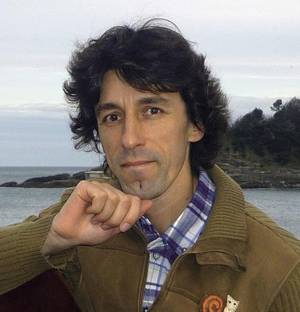Beyond the classification of both sexes
2015/06/08 Galarraga Aiestaran, Ana - Elhuyar Zientzia Iturria: Elhuyar aldizkaria

José Antonio Rodríguez, researcher and professor at the Faculty of Medicine of the UPV, recognizes that in the subject of Medical Genetics they continue to teach the “usual”: “That is, we continue to say that the sex chromosomes define the sex of the embryo, and in particular the SYR gene on the chromosome Y is the key to converting an embryo into a male. So it's easy: XX female and XY male. That's what we teach and in most cases so it is. Sometimes, however, the reality is different, and these other cases show that this separation is simple, but sometimes it is rarer.”
In fact, although the SYR gene is the key, other variables are involved in the process of converting the embryo into female or male. And any of them can alter the predictable evolution according to sexual chromosomes.
In fact, when the embryo is five weeks old, it has the ability to become anatomically male or female. Next to the developing kidneys there are two ridges that will become gonads and two pairs of tubes next to them. A couple of tubes can develop the trumpets and uterus of Fallopian and the other, conducting the male internal genitals.
The sixth week begins the process of developing ovaries or testicles. In short, the SYR gene activates the development of the testicles. Thus, when the SYR gene is expressed, through these crests the testicles develop, at the same time as the vessels that precede the tubes and the uterus of Fallopian are atrophied. On the other hand, testosterone is the testicles, a hormone that contributes to the development of the pipes of the male internal genitals and the development of the external genitals.
On the contrary, if the SYR gene does not exist or is not expressed, ovaries are developed and estrogen is formed. The evolution of the fallopian tubes and uterus, as well as the external genitals, along with other factors, is oriented. That is the process, almost always.
From dichotomy to spectrum
But almost always not always. In the same article in the journal Nature, “Sex redefined”, it is recalled that the SYR gene is not the only key to the development of the genitals, although for many years this has been considered. For example, 15 years ago it was known that other genes, such as WNT4, promote ovarian development and disrupt testicular development. Thus, sex chromosomes with XY and an extra copy of the WNT4 gene, develop the Fallopian tubes and uterus, although they are not fully composed.
In 2011, researchers showed that people with XX develop ovaries and testicles when the RSPO1 gene expressed in the ovaries is wrong. These types of cases show, therefore, that the development of the gonads does not always conform to what is expected according to sexual chromosomes.
In the article “Sex redefined” appear some examples of variations not only in the development of gonads, but also in the production of hormones. For example, if male sex hormone receptors present some error, the child usually has the joy of having chromosomes and testicles Y.
Taking into account that variations can be very varied, the doctor Eric Vilain proposes in his article to consider the classification of sex as “spectrum”. Vilain, director of the Center for Gender Biology at the University of California, believes that from a biological point of view the idea of spectrum explains better the reality than binary division.
Binary vision
Rodríguez of the UPV-EHU shares that binary sexual division does not reflect genetic, physiological and anatomical diversity, but recalls that legally there are only two options. “And in practice we also explain in our subject following this scheme, Rodríguez has accepted. “In fact, although it is known to be simple, in most cases the binary distribution is adequate. Therefore, in practice, the scheme has not changed and in that complexity we do not deepen much”.
For its part, the Spanish Association of Pediatrics collects in detail this complexity in the report entitled “Anomalies in sexual differentiation”. According to the report, among rare diseases are variations in sexual differentiation. In addition, it establishes that the diagnosis and treatment of these cases should be interdisciplinary and enumerates the disciplines that should participate: pediatrics, endocrinology, biochemistry, genetics, surgery, radiology, pathology, psychology and psychiatry.
In any case, Rodríguez totally agrees with what was said by Vilain at the end of the article published in Natura: “If you want to know if someone is a woman or a man, it’s best to ask him.”
Intersexuality, explanatory concept
In that sentence is the key, according to sexologist Ángel Mayor. For Chrysalis Euskal Herria, president of the association of parents of transgender children, that is what should be done in all cases.
In any case, Mayor considers that the proposal in the journal Nature is “reinventing the wheel”. In addition, it does not see with good eyes the variants that exist in the article as confusion.
Before this, he explained the concept of intersexuality: “For those who appear in the article, sexual dimorphism is still a referent and does not take into account a concept that in sexology was raised a hundred years ago and that is very clarifying and productive, that is, intersexuality.”

Havelock Ellis and Magnus Hirschfield were the first sexologists to work on the concept of intersexuality, and according to them, men and women all have characteristics of both sexes, which generates diversity. “Therefore, that is intersexuality in sexology and not, as some believe, the existence of ambiguous genital organs,” explains Mayor.
“According to this concept, instead of seeing sex as a dichotomy, it is understood as a continuum. This explains the diversity that exists in sex,” explains Mayor. In his view, if the other disciplines worked with this concept, they would understand much better the cases they consider confused and there would be no problems recognizing and explaining diversity.
It is also a sexual dichotomy in society. Given what can be done, Mayor is clear: “What we can do is predict sex. And I do not mean cases with ambiguous genitals, which can be more difficult, but most. That is, we can say that if a child is born with the penis and testicles, with great probability will be the boy, and if he has the joy, surely it will be the girl”.
But he mentions one: “Many research claims that this announcement will be erroneous in one out of every 15,000 cases and more recent research claims we have even more chance of making mistakes: Specifically in one of the 1,500 cases. It is clear that more studies have to be done to know how many cases occur, but in any case, the initial prediction will not be correct in some cases.”
Predict instead of implanting
Now, Mayo has said that newborns are "imposed" on sex. “In the newborn, depending on the external genitals, the child or the girl is classified and it will be very difficult to leave that classification. It will depend on it: you will have to go urinating to one bathroom or another...”

In most cases, Mayor indicates that this does not pose problems: “When they match the sex that has been imposed on him and his real sex there is no problem.” But sometimes it's not like this: “A big problem arises when the established and the feeling do not coincide. Because the vision that exists in this society is that the child or the young person is mixed, and that we must guide him, that we must teach him what his sex is, that it must be according to what has been imposed on him based on the genital organs.”
To modify it, Mayo proposes that the contribution of sexologists can be: “When the baby is born, instead of applying sex, we will announce that we are making a prediction. And if at any moment we realize that we have erred, we would accept that and change the initial content of the documents, just as we change our address.”
Along with this, Mayor believes that it is urgent to expand this vision in society. In cases where the prediction is wrong, it is very important that parents accompany the child. “However, if the parents do not have that vision, they will not be able to help him, and they will be the first to deny the character of the child. And it is that for a person being a girl or boy, or being a woman or man, is fundamental in his being. Therefore, when he is denied everything by himself, he is placed a great obstacle to living well.”
If the paradigm proposed by Mayor were to be followed, this problem would not occur, even when the external genitals are ambiguous: “Then we would also do the same: try to predict the sex to which it belongs and wait for the child to grow and tell us if he is a girl or boy so we know it.”
In that sense, experts agree: the best thing to know someone's sex is to ask.

Gai honi buruzko eduki gehiago
Elhuyarrek garatutako teknologia








